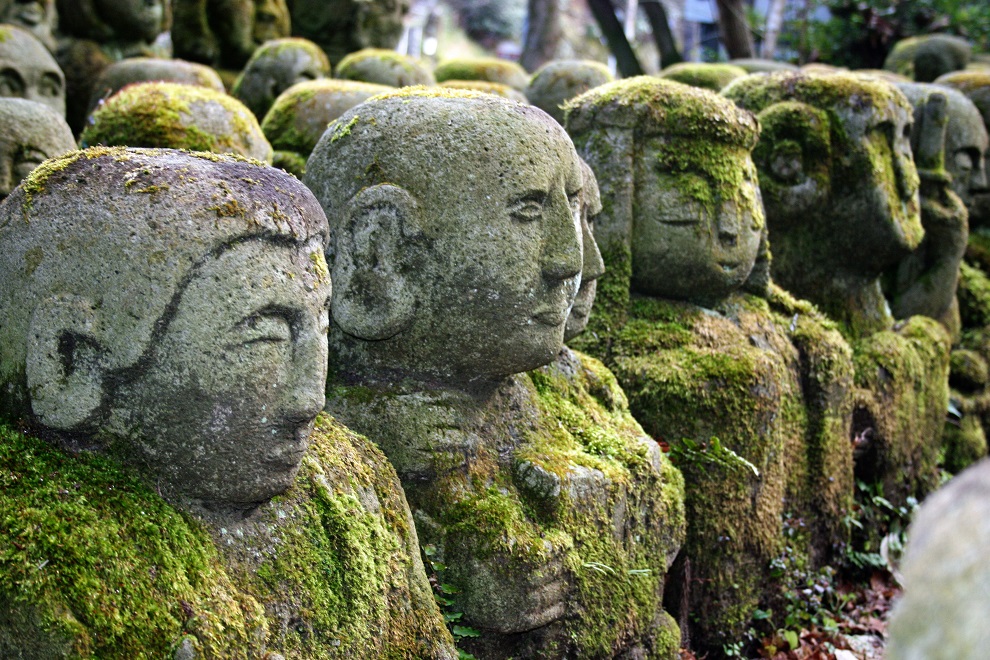Arashiyama
Arashiyama is a pleasant, touristy district in the western outskirts of Kyoto. The area has been a popular destination since the Heian Period (794-1185), when nobles would enjoy its natural setting. Arashiyama is particularly popular during the cherry blossom and fall color seasons.
The Togetsukyo Bridge is Arashiyama's well known, central landmark. Many small shops, restaurants and other attractions are found nearby, including Tenryuji Temple, Arashiyama's famous bamboo groves and pleasure boats that are available for rent on the river.
North of central Arashiyama the atmosphere becomes less touristy and more rural, with several small temples scattered along the base of the wooded mountains. The area north of the Togetsukyo Bridge is also known as Sagano, while the name "Arashiyama" technically just refers to the mountains on the southern bank of the river but is commonly used to name the entire district.
One of the most enjoyable and convenient ways to travel around the Sagano area is by rental bicycle, which are available for around 1000 yen near the train stations. Cycling through rural residential areas and past fields while traveling between temples can be one of the most enjoyable parts of a visit to Arashiyama. There is also an attractive preserved town area near the Adashino Nenbutsuji Temple.
Arashiyama becomes most attractive (and busy) around early April and the second half of November when the cherry blossom and fall color seasons usually peak. During the summer months, traditional cormorant fishing is practiced on the Hozu River for tourists to watch. Another good time to visit is during December's Hanatoro illumination, when lanterns line the streets and bamboo groves.
The Togetsukyo Bridge (lit. "Moon Crossing Bridge") is Arashiyama's most iconic landmark. It was originally built during the Heian Period (794-1185) and most recently reconstructed in the 1930s. The bridge looks particularly attractive in combination with the forested mountainside in the background. A riverside park with dozens of cherry trees is located just adjacent to the bridge.
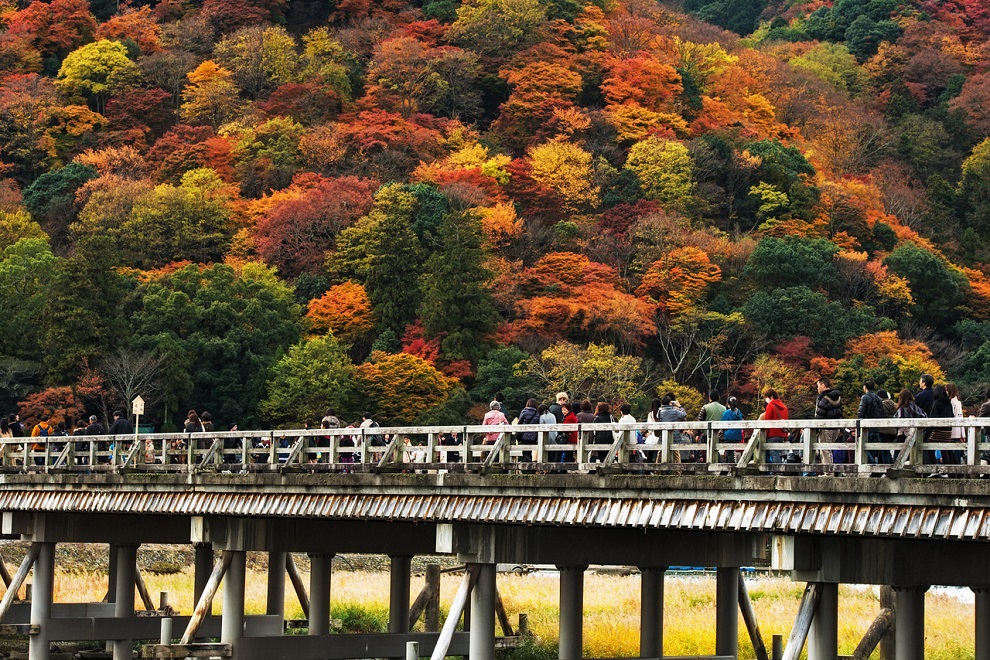
The walking paths that cut through the bamboo groves make for a nice walk or bicycle ride. The groves are particularly attractive when there is a light wind and the tall bamboo stalks sway gently back and forth. The bamboo has been used to manufacture various products, such as baskets, cups, boxes and mats at local workshops for centuries.
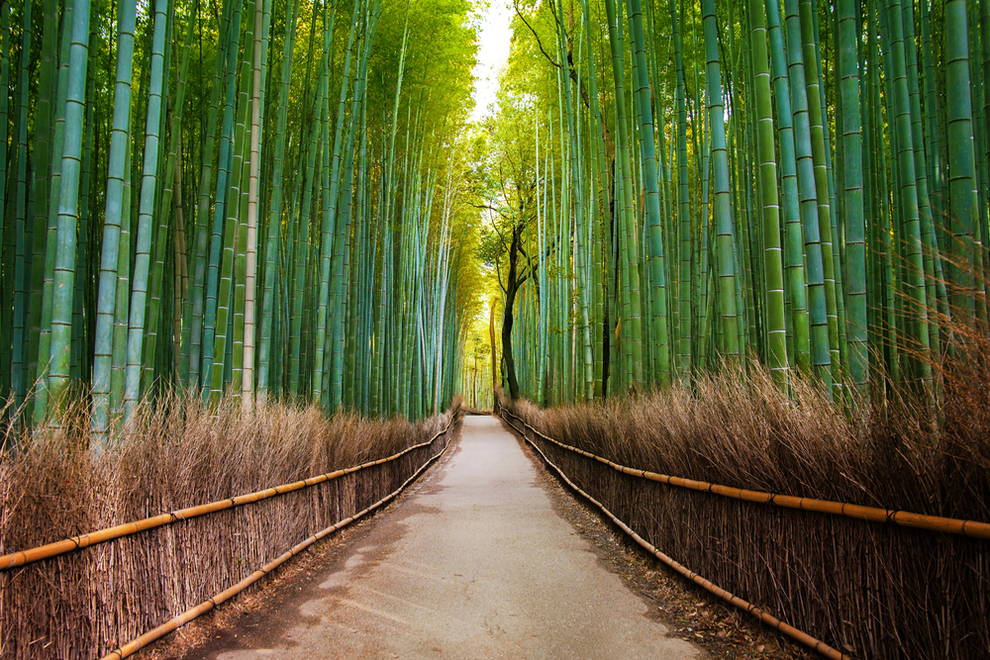
This is the former villa of the popular actor Okochi Denjiro (1896-1962), located in the back of Arashiyama's bamboo groves. Okochi Sanso consists of several different gardens and buildings, including living quarters, tea houses and gates. The buildings can only be viewed from the outside. Admission includes matcha green tea with a snack.
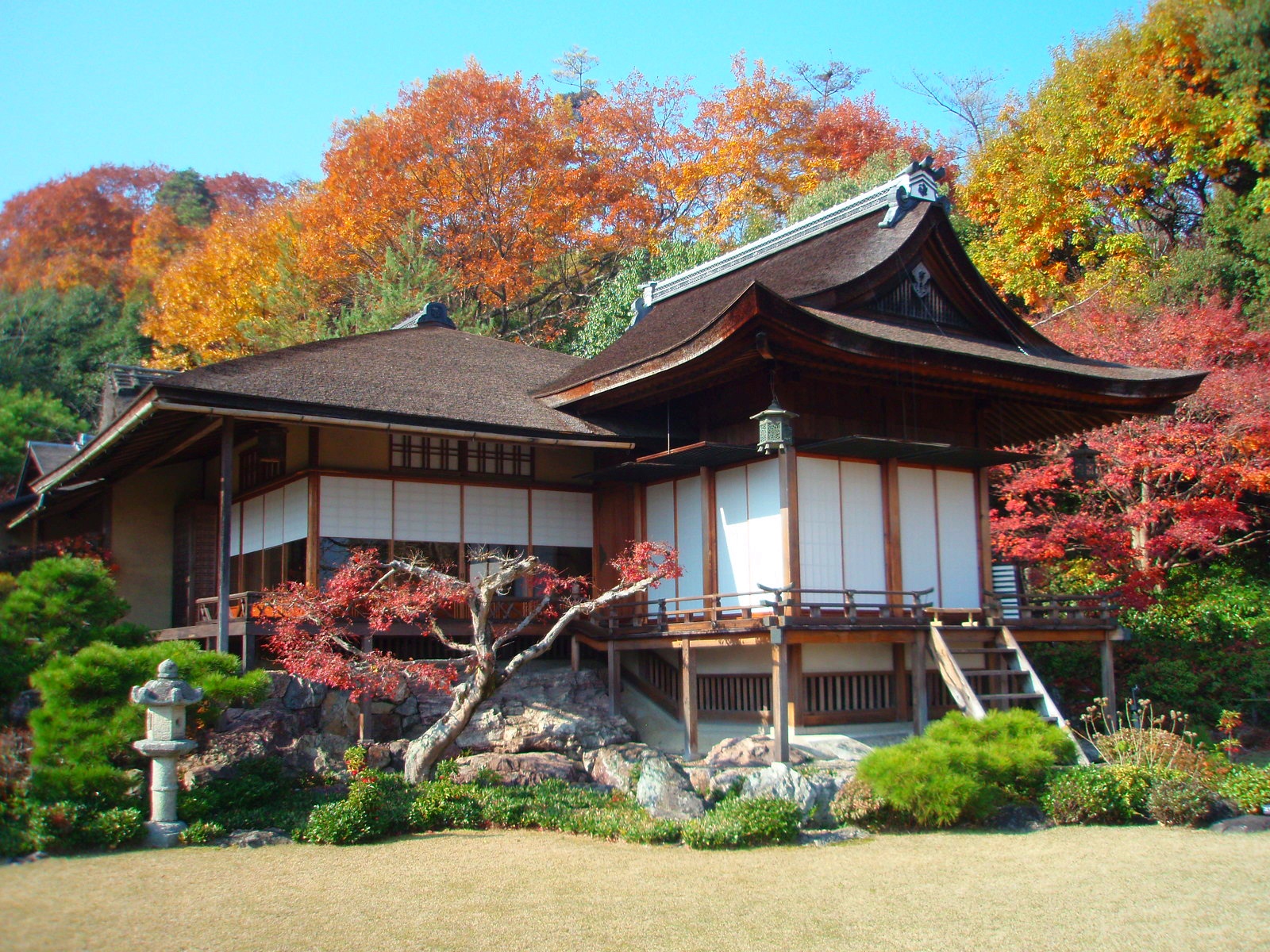
Located in the Arashiyama mountains, the entrance to the monkey park can be found just south of the Togetsukyo Bridge. After hiking uphill for about ten minutes, visitors will find an open area with over a hundred monkeys roaming freely. There are also nice views down onto the city.
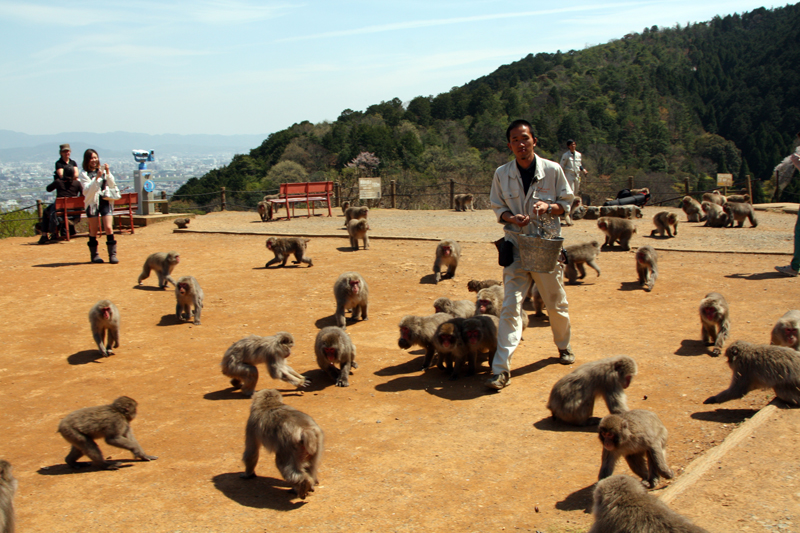
Much of this street along the way to the Adashino Nenbutsuji Temple has been preserved in the style of the Meiji Period (1868-1912). Many of the buildings are traditional machiya ("town houses") that served as private residences but have since been converted into shops and restaurants.
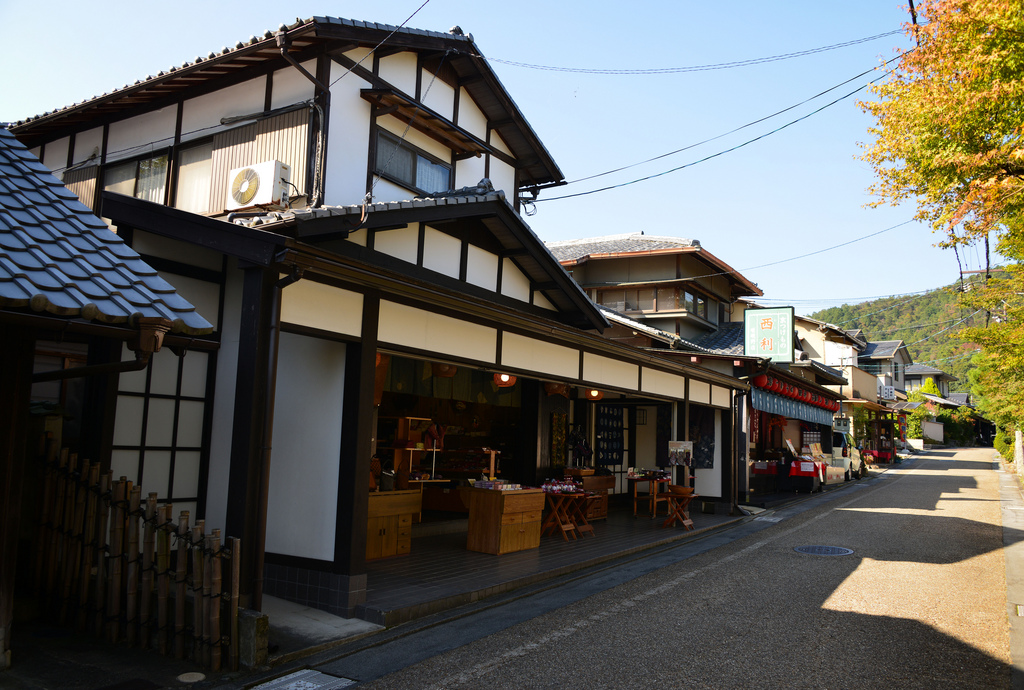
The Rakushisha Residence is a thatched hut that belonged to the 17th century haiku poet Mukai Kyorai. Mukai was a student of Basho Matsuo, one of Japan's greatest poets. Basho even composed a few poems here. Mukai named his residence Rakushisha ("fallen persimmon hut") after a storm had taken down the fruits of the surrounding trees.
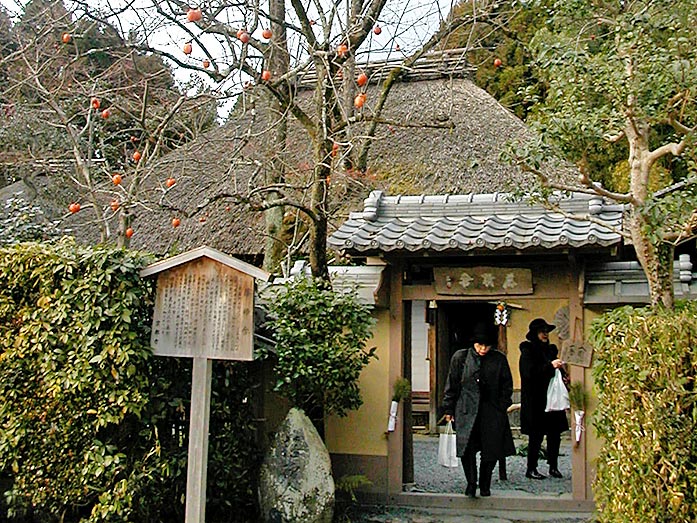
Ranked among Kyoto's five great Zen temples, Tenryuji is the largest and most impressive temple in Arashiyama. Founded in 1339 at the beginning of the Muromachi Period (1338-1573), the temple is one of Kyoto's many UNESCO World Heritage Sites. In addition to its temple buildings, there are attractive gardens with walking paths.
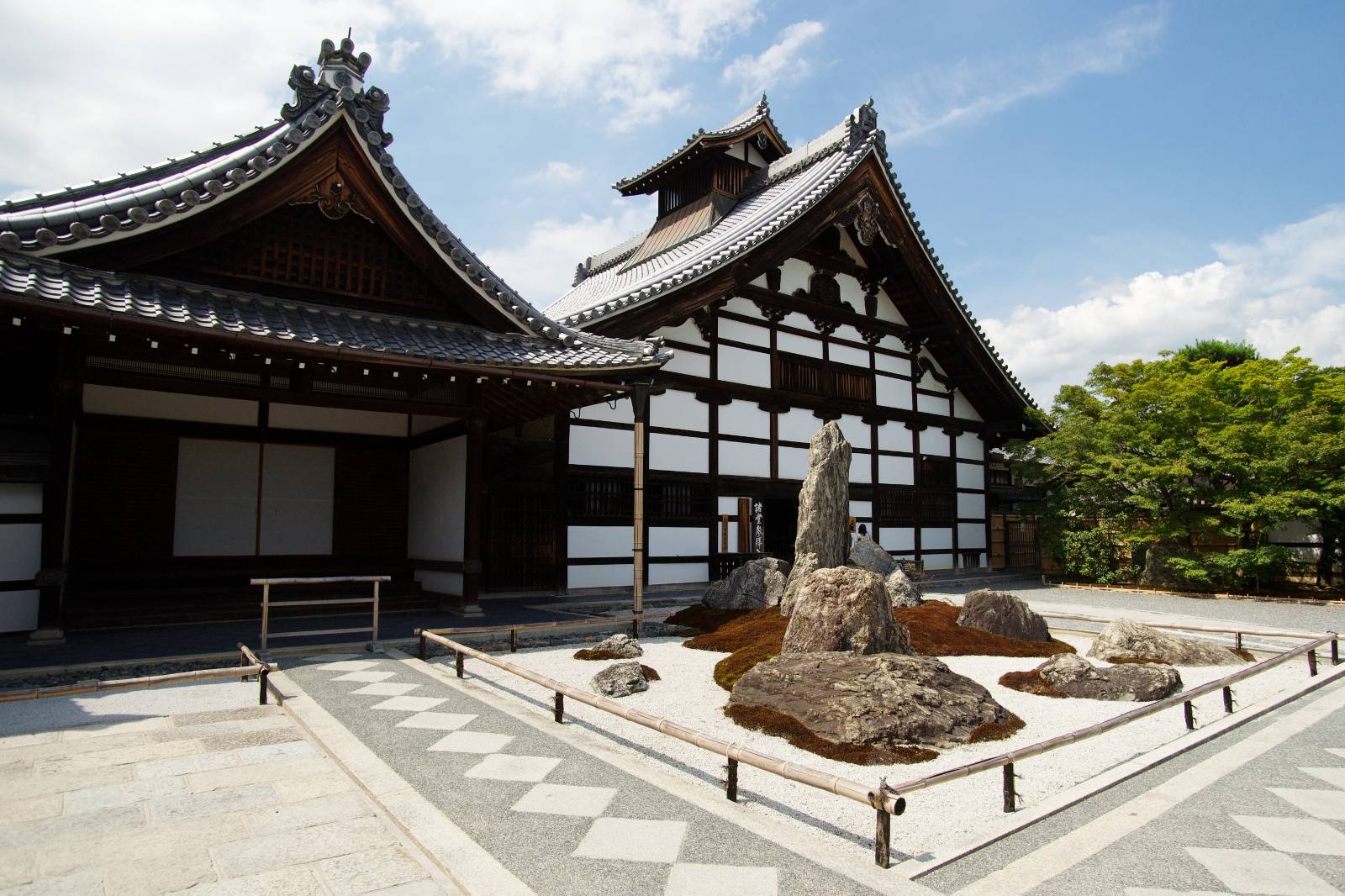
Daikakuji is a temple of the Shingon sect of Japanese Buddhism. Formerly the residence of an emperor, the buildings were converted into a temple in 876. During its history the temple traditionally had members of the imperial family serve as the head priest. Beside the main temple buildings there is a large pond and a pagoda.
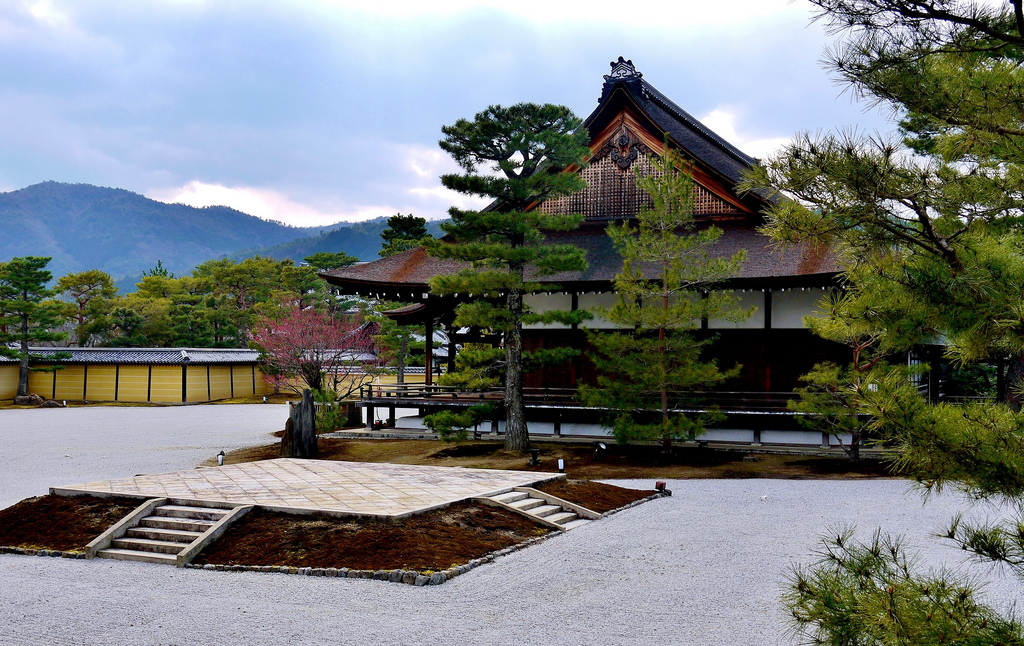
This mountainside temple was founded in 1596. With small, attractive buildings and gates, the temple has a quiet and understated atmosphere. Maple trees and moss are located just beside the paths and stairs that lead across the temple grounds. From a number of spots, visitors can enjoy views over Kyoto. The main hall is currently being renovated through summer 2016, but a visit is still worthwhile.
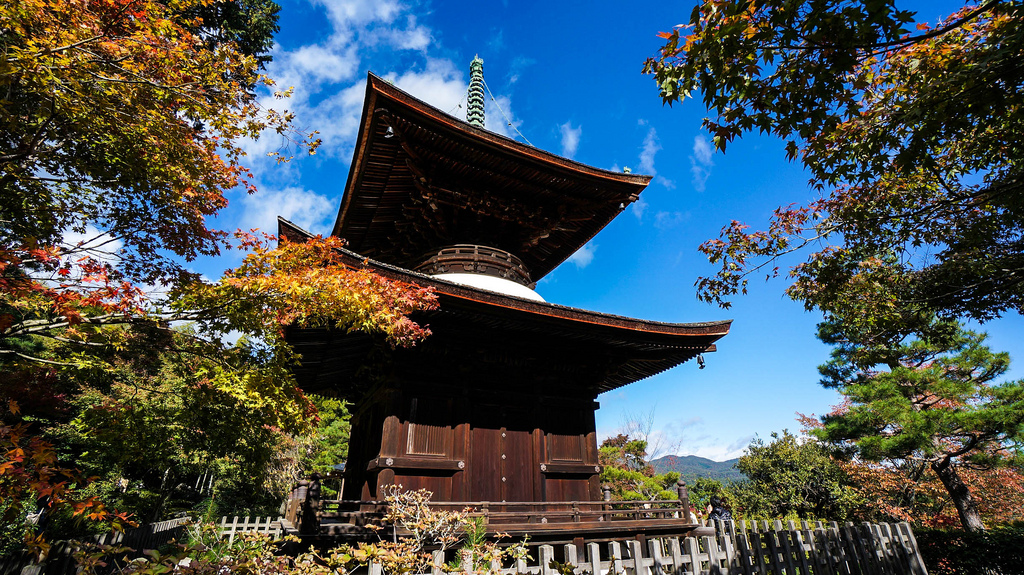
Similar to Jojakkoji, Nisonin Temple is a hillside temple with slightly larger and imposing buildings. A generally understated atmosphere on the temple grounds is partly due to the overhanging trees along approach. Founded in the mid 9th century, Nisonin is a temple of the Tendai sect. There are views over the city from the upper grounds.
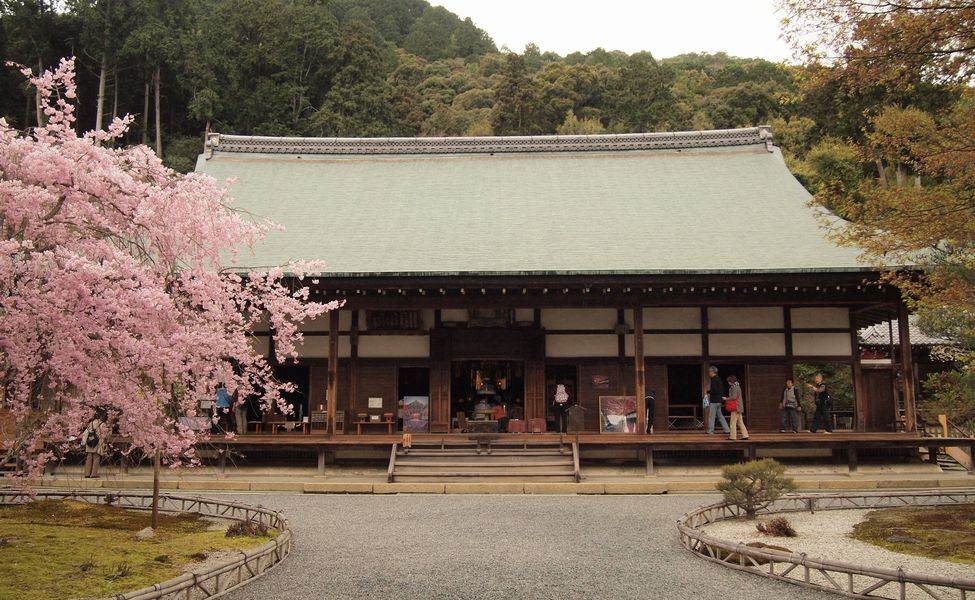
Gioji is even more nestled into the forest than Jojakkoji and Nisonin. It is known for its moss garden that is punctuated with tall maple trees. The temple's entrance gate and small main hall have thatched roofs. The latter has an attractive round window looking into the gardens.
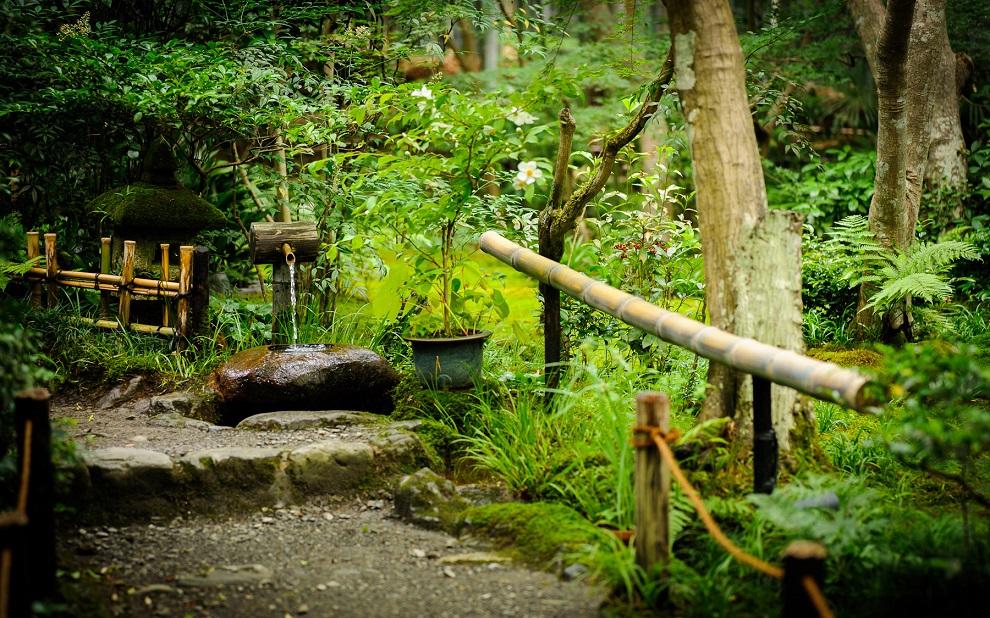
Adashino Nenbutsuji is located at the end of the Saga-Toriimoto Preserved Street. The temple was founded in the early 9th century when the famous monk Kobo Daishi placed stone statues for the souls of the dead here. Today, the temple grounds are covered by hundreds of such stone statues. In the back of the temple, a short path leads through a bamboo forest.
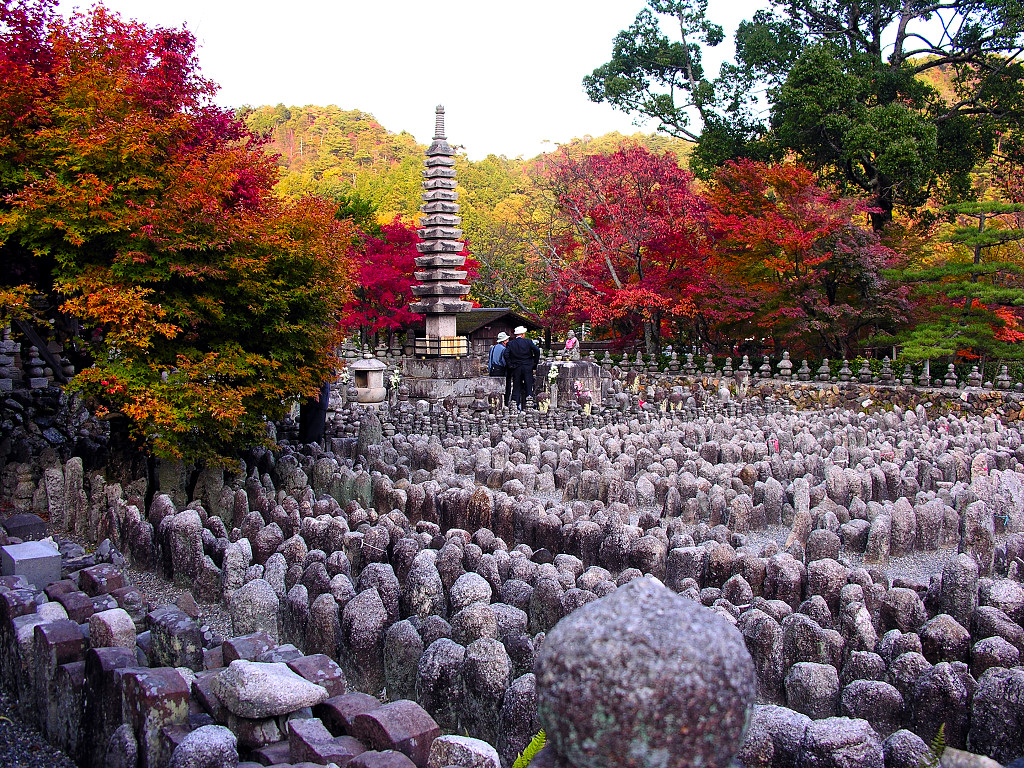
Another ten minute walk north of the similarly named Adashino Nenbutsuji, the Otagi Nenbutsuji Temple is famous for its 1200 stone statues of rakan, devoted followers of Buddhism, each with a different facial expression. Created relatively recently in the 1980s and early 1990s, the many statues stand across the temple grounds which cover part of a forested mountain slope.
